Jürgen Stroop
| Jürgen Stroop | |
|---|---|
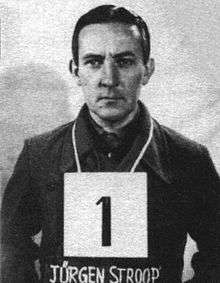 Jürgen Stroop in U.S. military custody, 1945 | |
| Born |
26 September 1895 Detmold, Germany |
| Died |
6 March 1952 (aged 56) Warsaw, Poland |
| Allegiance |
|
| Service/branch |
|
| Rank |
Vizefeldwebel SS- und Polizeiführer |
| Battles/wars | |
| Awards |
Iron Cross 1st Class Infantry Assault Badge Wound Badge War Merit Cross 1st Class with Swords |
Jürgen Stroop (born Josef Stroop, 26 September 1895 in Detmold, Germany – 6 March 1952 in Warsaw, Poland) was an SS General during World War II. He was in command against the Warsaw Ghetto Uprising and wrote the Stroop Report, a book-length account of the operation. Following the defeat of Nazi Germany, Stroop was prosecuted during the Dachau Trials and convicted of murdering nine American POWs. After his extradition to the People's Republic of Poland, Stroop was tried, convicted, and hanged for crimes against humanity.
Life
Jürgen Stroop was born in the Principality of Lippe, in the German Empire. His father, Konrad Stroop, was Lippe's chief of police. His mother, Katherine Stroop, was a full-time homemaker. In conversation with Kazimierz Moczarski while imprisoned in 1949, Stroop recalled his devoutly religious mother as "a near fanatic,"[1] who subjected him to childhood physical abuse.[2] Both of his parents were enthusiastic monarchists. During parades in Detmold Konrad Stroop often pointed out Leopold IV, Prince of Lippe and said, "Remember this always. This is our Prince. Obey him and serve him as I have."[3]
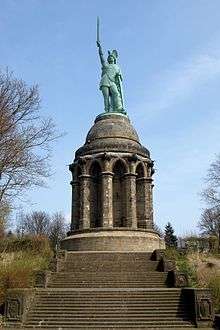
Stroop's sense of German patriotism was fostered by growing up in the shadow of the Hermannsdenkmal.[4] After receiving an elementary education, he became an apprentice with the land register in Detmold, where he worked until the outbreak of World War I.
World War I
Stroop enlisted in the Prussian Army in 1914 and served in several infantry regiments along the Western Front. He was wounded in action near La Bassée in October 1914.[5]
After eight months' sick leave in Detmold, Stroop was transferred to the Eastern Front in July 1915. He fought in Russian Poland, Lithuania, Belarus, Austrian Galicia, and in Romania. Stroop was awarded the Iron Cross on December 2, 1915. He was later awarded with the Medal for Military Merit of Lippe on January 14, 1915 and the War Merit Cross of Lippe on September 22, 1916.
At the end of the war, Stroop's regiment was addressed by Field Marshal August von Mackensen. Stroop later recalled,
He spelled out our military and political goals and warned that we must work to preserve order in the homeland until our national strength was fully restored. We bade him goodbye like sons. Then we boarded the train in an orderly way with our weapons. We didn't disperse like some of the other units, we went back to Germany like soldiers. My war, Herr Moczarski, ended on December 21, 1918, not November 11th. I barely made it home in time for Christmas.[6]
After being demobilized, Stroop returned to work at the land register, while remaining active in a veterans' organization.
Marriage
While stationed in Austrian Galicia during the First World War, Stroop became engaged to a Polish woman named Lona. He later recalled, "My Lona was so good, so feminine, so wise. I wanted to marry her. Maybe even settle in Poland."[7] Despite the opposition of Stroop's family and friends in Detmold, he remained engaged to Lona until 1922.[7]
To the outrage of his devoutly Catholic mother, Stroop married Katharina B., the daughter of a minister from the Protestant Church of Lippe, on July 3, 1923.[8] Katharina Stroop remained a loyal and obedient wife despite her husband's many infidelities and visits to Lebensborn centers.[9] Their marriage produced a daughter, Renate Stroop, who was born in February, 1928.[8] Their first son, Jürgen Stroop, was born in 1934 and died soon after birth.[10] Their second son, Olaf Stroop, was born in February, 1936.[11]
Paganism
During the early 1920s, Stroop joined the Tannenbergbund and embraced Germanic neo-paganism under the influence of General Erich Ludendorff and his wife Mathilde. He later recalled that Mathilde Ludendorff
revealed the truth about the Catholic Church in Germany and returned us to the true Germanic gods. By recalling the pure, pre-Germanic ways, she pointed out the rottenness of the Judeo-Christian ethic and showed how the organized Church had been strangling the Reich for twelve hundred years.
Stroop further recalled, "It was thanks to what I was lucky enough to learn from her books that I was able to rid myself of religious prejudice and mark Gottgläubig in the column concerning belief."[12]
In another conversation with Moczarski, Stroop called Catholicism, "a catch-all of religions, infected with Judaism."[13] He further claimed that Christianity was created as a Jewish conspiracy for "the weakening and debasement of man through guilt."[14]
SS career
Stroop joined the NSDAP and SS in 1932. In 1933, he was appointed leader of the state auxiliary police. One year later, he was promoted from the rank of SS-Oberscharführer to SS-Hauptsturmführer. Subsequently, he worked for the SS administration in Münster and Hamburg.
Encounter with Bishop Clemens von Galen

In 1934, Bishop Clemens von Galen of Münster began to attack the racist ideologies of the new regime, partly poking fun at it, partly critiquing its ideological basis as published by Alfred Rosenberg. He declared it as unacceptable to refuse the Old Testament because of its Jewish authorship, and to limit morality and virtue to the perceived usefulness of a particular race.[15]
In retaliation, Stroop and a von Galen family member who had joined the SS made an official visit to the Bishop. Both were instructed to pressure the Bishop into openly expressing approval of Rosenberg's doctrines. If he refused to do so, they were ordered to threaten him with the confiscation of Church property and an Anti-Catholic propaganda campaign. Stroop later recalled, "Bishop von Galen was a great gentleman, a true aristocrat, a Renaissance prince of the Church. He welcomed us politely but with reserve."[16]
The visit began well, with Bishop von Galen commending Stroop's mother for her devout Catholicism and charitable work in Detmold. Then, however, the Bishop turned the tables on his two visitors. He categorically refused to accept or praise Rosenberg's doctrines of euthanising or forcibly sterilizing the disabled. To Stroop's further shock, the Bishop then denounced the Nazis for trying to introduce Germanic neo-paganism into his diocese. He scoffed at marriage ceremonies and funerals conducted before altars dedicated to Wotan. Stroop, who had attended such a ceremony only days before, was stunned that the Bishop had learned of it so quickly. At the end of the meeting, the Bishop stated that the Church would remain loyal to the State in all lawful matters. He expressed his deep love for Germany and reminded them that he had been the first Bishop to publicly acknowledge the new regime.[17]
Stroop later lamented the fact that Bishop von Galen's German patriotism "was tainted by Papist ideals, which have been harmful to Germany for centuries. Besides, the Archbishop's orders came from outside the Fatherland, a fact which disturbed us. We all know that despite its diverse factions, the Catholic Church is a world community, which sticks together when the chips are down."[18]
Sudetenland
In September 1938, Stroop was promoted again, this time to the rank of SS-Standartenführer (colonel) and served near Liberec, in the Sudetenland. In conversation with Moczarski, Stroop happily reminisced about his many visits to the hot springs at Karlsbad.
For this reason, their cellmate, Gustav Schielke, expressed disgust that, instead of serving in combat, "Herr General did battle in spas."[19]
World War II
After the invasion of Poland, Stroop served as commander of the SS section in Gnesen (Gniezno). During the occupation of Poland, Stroop was transferred to Poznań as head of Selbstschutz, the notorious "self-defense" formation of the local ethnic Germans.
In May 1941, Stroop changed his name from Josef to Jürgen for ideological reasons and in honor of his dead infant son. From 7 July to 15 September 1941, Stroop served in combat on the eastern front with the infantry regiment of the 3rd SS Division Totenkopf. He was awarded a Clasp to the Iron Cross 2nd Class and an Infantry Assault Badge in Bronze. On 16 September 1942, he was promoted to SS-Brigadeführer and assigned as an Inspector of the SiPo and SD of the Higher SS and Police Leader for Russia South. In this position Stroop worked to help secure a key logistical route for German forces on the Eastern Front. Beginning in October 1942, Stroop commanded an SS garrison at Kherson, before becoming the SS and Police Leader (SSPF) for Lemberg (Lviv) in February 1943.
Suppression of the Warsaw ghetto uprising

Stroop's most historically prominent role was the suppression of the Warsaw Ghetto Uprising, an action which cost the lives of over 50,000 people. He was sent to Warsaw on 17 April 1943 by Heinrich Himmler, as a replacement for SS-Oberführer Ferdinand von Sammern-Frankenegg, who was relieved of duty.[20][21] Stroop took over from Sammern-Frankenegg following the latter's failure to suppress the uprising at the onset:[22]
I had two battalions of Waffen-SS, one hundred army men, units of Order Police, and seventy-five to a hundred Security Police people. The Security Police had been active in the Warsaw ghetto for some time, and during this program it was their function to accompany SS units in groups of six or eight, as guides and experts in ghetto matters.[23]
Stroop ordered the entire Ghetto to be systematically burned down and blown up building by building. All of the survivors, including men, women, and children were either killed on the spot or deported to extermination camps. In conversation with Moczarski, Stroop described the destruction of the Ghetto in great detail. Stroop also disclosed that, unlike the men under his command, he always left the Ghetto at mealtimes and overnight.

Stroop later recalled:
May First was memorable for a number of reasons. I witnessed an extraordinary scene that day. A group of prisoners had been herded into the square. In spite of their exhaustion, many of them held their heads high. I stood nearby, surrounded by my escort. Suddenly I heard shots. A young Jew – in his midtwenties I'd guess – was firing a pistol at one of our police officers – one...two...three...fast as lightning. One of the bullets hit the officer's hand. My men sprayed the Jew with fire. I managed to whip out my own pistol and hit him as he fell. As he lay dying, I stood over him, watching his life ebb away. — Jurgen Stroop, Conversations with an Executioner [24]
Stroop expressed confusion that the Ghetto's Jewish combatants, whom he had been taught to view as Untermenschen, had fought so effectively against his men. He later remarked: "...if you'd been in our shoes, Herr Moczarski, you'd have been surprised that the fighting ended as soon as it did. It's all history now, and the world's gone topsy-turvy, so why not speak the truth here in our cell? The Jews surprised me and my officers, and even Dr. Hahn, with their determination in battle. And believe me, as veterans of World War I and SS members, we knew what determination in battle was all about. The tenacity of your Warsaw Jews took us completely by surprise. That's the real reason the Großaktion lasted as long as it did."[25]
SS and Police Leader of Warsaw
After the uprising was suppressed, Stroop ordered the destruction of Warsaw's Great Synagogue:
What a marvelous sight it was. A fantastic piece of theater. My staff and I stood at a distance. I held the electrical device which would detonate all the charges simultaneously. Jesuiter called for silence. I glanced over at my brave officers and men, tired and dirty, silhouetted against the glow of the burning buildings. After prolonging the suspense for a moment, I shouted: Heil Hitler and pressed the button. With a thunderous, deafening bang and a rainbow burst of colors, the fiery explosion soared toward the clouds, an unforgettable tribute to our triumph over the Jews. The Warsaw Ghetto was no more. The will of Adolf Hitler and Heinrich Himmler had been done."— Jürgen Stroop, Conversations with an Executioner [26]
Stroop then formally assumed the position of SS and Police Leader of Warsaw. Krüger presented an Iron Cross 1st Class to him on 18 June 1943 for the Warsaw Ghetto "action" at a gala reception in Warsaw’s Lazienki Park. Stroop's own detailed 75-page report on the suppression of the Warsaw Ghetto Uprising was bound in black leather. It included copies of all communiqués sent to SS Police Leader East Friedrich-Wilhelm Krüger and many photographs. Originally titled The Jewish Quarter of Warsaw is no more!, it would later be used as evidence at the Nuremberg Trials.
Occupied Greece
Stroop was subsequently named the Higher SS and Police Leader (HSSPF) in Greece on 8 September 1943. The local civilian administration found his methods and behaviour unacceptable and withdrew cooperation, forbidding the local Order Police from having anything to do with him, which made his position untenable. Consequently, he was removed and on 9 November was appointed Commander of SS-Oberabschnitt Rhein-Westmark (an SS administrative district named for the Rhine and Gau Westmark) in Wiesbaden, serving there until the close of the war.[27]
July 20th plot

According to Moczarski, there was never any subject that enraged Stroop more than the July 20th Plot against the life of Adolf Hitler. Whenever the subject came up, Stroop would curse those involved, "in unprintable terms,"[28] as a "murderous band of generals and Jew-ridden civilians."[28] He exclaimed,
How could they consider harming their Führer? Adolf Hitler was placed on earth by a higher power, perhaps Wotan himself, to fulfill a sacred mission. The July conspiracy was an example of the moral decay that proved to be our undoing. It would have been impossible to defeat Germany without German participation, Herr Moczarski. If it hadn't been for negligence disguised as tolerance, we could have held off the whole world. Instead, we allowed degenerate forces to pollute our healthy masses. A few weaklings poisoned by enemy agents and infected with subversive ideologies were all it took to undermine us. The minute we suffered military defeats, the cancerous elements in our society swung into action, organizing Mafias and creating 'patriotic discussion groups.' In the end, they destroyed our nation.[28]
Stroop proudly related his involvement in the purge of Anti-Nazi Germans which followed the Plot's failure. He expressed annoyance that Field Marshal Erwin Rommel had been allowed to commit suicide rather than being hanged from a meat hook.[29] He also praised Roland Freisler of the Volksgerichtshof as "a fine judge."[30]

Stroop also boasted about his participation in dealing with Field Marshal Günther von Kluge for his involvement in the Plot.
As General Wilhelm Burgdorf had done with Rommel, Stroop claimed to have offered the Field Marshal a choice between suicide and a show trial before Judge Freisler. To Stroop's outrage, Kluge demanded his day in court. Stroop then claimed to have personally shot Kluge in the head. Himmler then announced that the Field Marshal had committed suicide.[31]
When Stroop was asked by Moczarski why he thought the Third Reich collapsed, he said,
We lost the war for one reason only! The plotting of internationalist factions. The Communists, Socialists, Jews, Reactionaries, Anglo-Saxons, Freemasons, and Catholic elements tore our nation apart. What's more, the Reich could never have been defeated without the help of traitors like Canaris, Goerdeler, Stauffenberg, Thälmann, Schumacher, Niemöller, Kluge, Paulus, Pieck, and scum like that Norwegian Willy Brandt. History proves that we were too liberal, Herr Moczarski. We should have muzzled those scoundrels more tightly.[32]
Murdering POWs
Between October 1944 and March 1945, nine men of the United States Army Air Corps were summarily executed after being shot down and captured in Stroop's district. Their known names were Sergeant Willard P. Perry, Sergeant Robert W. Garrison, Private Ray R. Herman, Second Lieutenant William A. Duke, Second Lieutenant Archibald B. Monroe, Private Jimmie R. Heathman, Lieutenant William H. Forman, and Private Robert T. McDonald.[33]
When Moczarski reminded him that the killing of POWs was defined as criminal under the Hague and Geneva Conventions, Stroop responded, "It was common knowledge that American flyers were terrorists and murderers who used methods contrary to civilized norms... We were given a statement to that effect from the highest authorities. It was accompanied by an order from Heinrich Himmler."[34] As a result, he explained, all nine POWs had been taken to the forest and given "a ration of lead for their American necks."[35]
Last meeting with Himmler
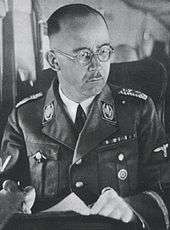
In late March 1945, Stroop was forced to retreat from Wiesbaden as the advancing U.S. Army crossed the Rhine bridgeheads. Upon his arrival in Pottenstein, Bavaria, Stroop received word that Heinrich Himmler wished to meet him in Berlin. On April 14, Stroop met Himmler in his private train near Prenzlau.
Stroop later recalled,
After inquiring about my family, he asked for a full report on events in Wiesbaden and congratulated me on my success with Von Kluge. Adolf Hitler was behaving oddly, he confided, and might even be ill. Heinrich Himmler... ended our talk by asking if I would join his personal staff and eventually go north with him to Lübeck and later Denmark. Flattered though I was, I expressed my belief that during this period of temporary reversals, it was essential to organize a central resistance point in the southern Alps, until new weapons were ready. To my surprise, Heinrich Himmler asked if I really believed that the Third Reich could win the war. I insisted that nothing could quell the Germanic spirit awakened in our people by Adolf Hitler and his deeds. Besides, I argued, how could I desert my SS brothers and the hundreds of young Werwolf fighters whom I had ordered to the Bavarian Alps to set up a National Socialistic bunker for the preservation of the Third Reich?[36]
A weeping Himmler embraced Stroop and said, "With soldiers as devoted to Adolf Hitler as you, our Third Reich can never die."[37]
Operation Werwolf
With a pass signed by Himmler, Stroop travelled to the Alpine Redoubt with a group of teenaged Hitler Youth members whom he had been training for war. In order to obtain gasoline and other scarce supplies, Stroop showed Himmler's signed order and claimed to be transporting his Werwolf unit to build an Alpine bastion for the salvation of the Reich.
However, after a secret conference at Taxenbach, Austria, Stroop and his fellow Werwolf commanders decided to change into Wehrmacht uniforms and surrender to the Western Allies. Soon after, Stroop abandoned his Werwolf unit near Kufstein and fled north.[38] On May 10, 1945, Stroop surrendered to the American forces[39] in the village of Rottau, Bavaria.[40]
Postwar
Stroop told Moczarski that he had been carrying a cyanide tablet which he had intended to take if captured. When Moczarski asked him why he had not used it, Stroop replied, "It's really quite simple. I was afraid."[41] When he surrendered, Stroop carried forged discharge papers made out to a Wehrmacht Captain of Reserve Josef Straup. He kept to this story for nearly two months, before admitting to his actual identity on 2 July 1945.
Trial at Dachau
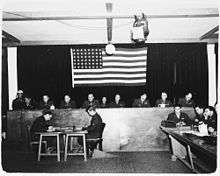
In the case of "U.S. vs. Jurgen Stroop, et al, the former General and his subordinates were prosecuted by the U.S. Military Tribunal at Dachau for the "liquidation" of the nine American POWs who had been summarily shot in his district.[42][43] Lieutenant Colonel William Dwinnel, a U.S. Army lawyer from Brooklyn, New York had appeared for the prosecution. Brigadier General Emil C. Kiel of the United States Air Force was assigned as the trial's judge. Stroop later called General Kiel "a cunning devil," and expressed a belief that the General was a Jew.[44]
In conversation with Moczarski, Stroop lamented, "Nearly all of those judges were Jews or Freemasons. I studied them very closely. Most of them had dark hair."[44] He further lamented that one of his U.S. Army defense lawyers was wearing a Masonic ring in court.[44] According to Gustav Schielke, his cellmate,
Stroop behaved like a swine in the dock. He acted innocent as a lamb, pretending the killings were news to him. Because of his incriminations, several fellow defendants were sentenced to death, as many as thirteen of the twenty-two. As senior commander of the SS and police, he gave all the orders, Herr Moczarski, yet he stated in court that his underlings had killed the American airmen on their own. How could a top German officer have acted like that?[45]
After an eight-week trial, Brigadier General Kiel sentenced Stroop to death by hanging on March 21, 1947. In November 1947, a death warrant was signed by General Lucius D. Clay. By then, however, Stroop had been imprisoned in Warsaw for five months.
Extradition to Poland
In late May 1947, Stroop was flown to Berlin-Tempelhof Airport and handed over to the People's Republic of Poland. He later recalled, "My heart sank when I saw those Polish officers at Tempelhof. So the Americans were liars after all! They'd promised me time and again that I'd never be given to the Communists and that my death sentence for killing the U.S. airmen would be commuted to life imprisonment."[46]
Imprisonment in Poland
While awaiting trial in Warsaw's Mokotów Prison, Stroop spent 255 days in the same cell with Kazimierz Moczarski, a former officer in the pre-war Polish Army. Moczarski, under the codename Maurycy, had served in Poland's anti-Nazi and anti-Soviet resistance movement, the Armia Krajowa in World War II. By the time they both met, he had already been incarcerated for more than three years, having been sentenced on January 18, 1946.[47]
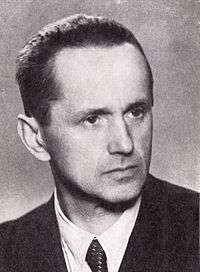
Moczarski had been ordered by AK to assassinate Stroop for crimes against the Polish Nation during his tenure as SS and Police Leader of Warsaw. Due to the unpredictability of Stroop's movements, Moczarski had been unable to carry out the mission.[48] Following the Soviet-led transformation of Poland into a Marxist-Leninist police state, Moczarski was arrested and savagely tortured by the Polish Ministry of State Security,[49] spending four years on death row before his release in 1956.[47]
During their joint incarceration, Stroop opened up in detail about his life, while expressing no remorse. He also shared with Moczarski his letters from his mother, wife, and children in West Germany. Moczarski later recalled: "The letters from his mother that Stroop gave me to read ... seemed to indicate that Frau Stroop did not view as crimes the acts for which Stroop had been jailed."[1]
Stroop also expressed his continuing belief in Nazi race doctrine. According to him, only the European Aryans, especially the Nordics like the Germans were the models of true man.[50] On November 11, 1949, Stroop and Moczarski were separated by prison authorities. As they left their cell for the last time, Stroop told Moczarski, "Today's your Independence Day, and the thirty-first anniversary of Germany's defeat in World War I. Goodbye, Herr Moczarski. See you soon at St. Peter's gate." Before parting, the two wartime enemies shook hands.[51]
Trial in Warsaw
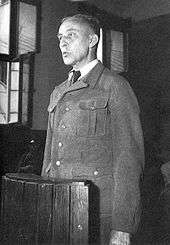
Stroop's trial began on July 18, 1951 at the Warsaw Criminal District Court and lasted three days. Stroop stood accused of four crimes:
- 1. Belonging to the SS, a criminal organization.
- 2. Liquidating the Warsaw Ghetto, leading to the murder of more than 50,000 people and deporting hundreds of thousands of other Jews to the death camps.
- 3. Ordering the shooting of one hundred Poles on July 16, 1943.
- 4. Participating in the mass murder of Polish civilians in the Warthegau.[52]
On 23 July 1951, the Court sentenced Stroop and Franz Konrad to death by hanging. In passing sentence, the Court declared,
Since the character and magnitude of Stroop's crimes, his attitude and his twisted explanations not only indicate a total lack of repentance but actually confirm that he retains his Nazi view of the world, the Court is unable to find the slightest attenuating circumstance in the accused Stroop's conduct. His actions show that he is a being devoid of human feeling, a Fascist hangman who tracked his victims with cold and relentless cruelty, an executioner who must be removed from the society of man.[53]
Execution
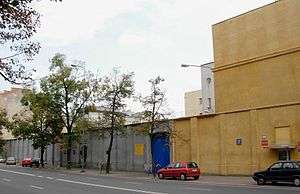
Jürgen Stroop was hanged at Mokotów Prison at seven o'clock in the evening on 6 March 1952. In 1961, Moczarski wrote to the Procurator General of the Polish Republic and received a letter about Stroop's last moments. According to the Procurator's letter, Stroop was calm, "exhibiting his usual arrogance", in the day before his hanging. He expressed no "last wish". Several days before the hanging the prison director had asked Stroop whether he could reconcile his conscience with the fact that he had personally murdered women and children in the Ghetto, and watched others do so at his orders. He replied that he felt no guilt about killing Jews. Stroop did not utter a word about Germany, Hitler, or future revenge.[54]
Conversations with an Executioner
Kazimierz Moczarski began collecting notes and writing a memoir about his 255-day incarceration from March 2, 1949 till November 11, 1949 in one cell with Jürgen Stroop after his release from prison and full rehabilitation in 1956 during the anti-Stalinist Polish October.[55] His manuscript was first written in secrecy. Some 15 years after his ordeal had ended, Moczarski published his memoir in instalments in the Polish magazine Odra monthly in 1972–74. He did not witness the publication of his work in book form. The first shortened book version was released in 1977, two years after Moczarski's death. The full text without communist censorship was published in 1992 after the collapse of the Soviet Union, by Polish Scientific Publishers PWN. Moczarski died on September 27, 1975 in Warsaw, already weakened by the years of physical torture endured during his communist police interrogations by the notorious UB secret police .[47]
The book titled Rozmowy z katem, with excerpts published in newspapers and magazines during his lifetime, was translated and published in English as Conversations with an Executioner by Prentice-Hall in 1981, hardcover. It has since been translated into several languages.[56]
In popular culture
- In the 1976 film The Eagle Has Landed, Jürgen Stroop is portrayed by the German actor Joachim Hansen (the character is simply referred to as "Herr Gruppenführer" and not by Stroop's actual name, although in the source novel by Jack Higgins, Stroop's name is used).
- In the 1988 alternate history novella "The Last Article" by Harry Turtledove, which takes place after a German victory in World War II, Stroop is a supporting character.
- In the 2001 film Uprising, Stroop is depicted as the film's main antagonist and is portrayed by the American actor Jon Voight.
- In the 2006 Polish television film Rozmowy z katem (Conversations with an Executioner), based on Kazimierz Moczarski's memoir, Stroop is played by the actor Piotr Fronczewski.
- On April 18, 2012, Philip Boehm's stage adaptation of Moczarski's memoir premiered at the Upstream Theater in St. Louis, Missouri.[57][58]
See also
- Ludwig Hahn who participated in the destruction and evacuation of the Warsaw Ghetto
Notes
- 1 2 Moczarski (1981), Conversations with an Executioner, Prentice Hall, page 10.
- ↑ Moczarski (1981), page 13.
- ↑ Moczarski (1981), page 14.
- ↑ Moczarski (1981), pages 14-15.
- ↑ Moczarski (1981), page 20.
- ↑ Moczarski (1981), page 24.
- 1 2 Moczarski (1981), pages21-22.
- 1 2 Moczarski (1981), page 31.
- ↑ Moczarski (1981), pages 58, 60.
- ↑ Moczarski (1981), page 55.
- ↑ Moczarski (1981), page 60.
- ↑ Kazimierz Moczarski (1981), pages 33–34.
- ↑ Moczarski (1981), pages 57-58.
- ↑ Moczarski (1981), page 58.
- ↑ Rudolf Morsey, Clemens August Kardinal von Galen – Bischöfliches Wirken in der Zeit der Hitler-Herrschaft. Landeszentrale für politische Bildung, Düsseldorf 1987, p. 14.
- ↑ Kazimierz Moczarski (1981), page 56.
- ↑ Moczarski (1981), pages 56-57.
- ↑ Moczarski (1981), page 57.
- ↑ Moczarski (1981), page 82.
- ↑ Moshe Arens, Who Defended The Warsaw Ghetto? (The Jerusalem Post)
- ↑ Jurgen Stroop Diary, including The Stroop Report: Table of Contents (Jewish Virtual Library)
- ↑ Jewish Virtual Library, Ferdinand von Sammern-Frankenegg Source: Danny Dor (Ed.), Brave and Desperate. Israel Ghetto Fighters, 2003, p. 166.
- ↑ "Statement by Stroop to Investigators About His Actions in the Warsaw Ghetto". Jewishvirtuallibrary.org. 1946-02-24. Retrieved 2012-05-04.
- ↑ Moczarski (1981), pages 148-149.
- ↑ Moczarski (1981), page 148.
- ↑ Moczarski (1981), page 164.
- ↑ "Axis History Factbook: SS-Oberabschnitt Rhein-Westmark". Axishistory.com. Retrieved 2012-05-25.
- 1 2 3 Moczarski (1981), page 220.
- ↑ Moczarski (1981), page 222.
- ↑ Moczarski (1981), page 224.
- ↑ Moczarski (1981), pages 226-234.
- ↑ Moczarski (1981), page 45.
- ↑ Moczarski (1981), pages 276-277.
- ↑ Moczarski (1981), page 250.
- ↑ Moczarski (1981), pages 251-252.
- ↑ Moczarski (1981), pages 237-238.
- ↑ Moczarski (1981), page 238.
- ↑ Moczarski (1981), pages 243-244.
- ↑ Moczarski (1981), page 248.
- ↑ Moczarski (1981), page 244.
- ↑ Moczarski (1981), page 246.
- ↑ Moczarski (1981), pages 248-256.
- ↑ "Nazi Crimes on Trial: The Dachau Trials". .jur.uva.nl. Retrieved 2012-05-04.
- 1 2 3 Moczarski (1981), page 249.
- ↑ Moczarski (1981), page 253.
- ↑ Moczarski(1981), Conversations with an Executioner, page 258.
- 1 2 3 Stéphane Courtois, Mark Kramer, Livre noir du Communisme: crimes, terreur, répression. The Black Book of Communism: Crimes, Terror, Repression, Harvard University Press, 1999, 858 pages. ISBN 0-674-07608-7. Pages 377–378.
- ↑ Moczarski (1981), pages 182-184.
- ↑ Stephane Courtois, The Black Book of Communism: Crimes, Terror, Repression, Harvard University Press, 1999. Pages 377-378.
- ↑ Moczarski (1981), pages 146-147.
- ↑ Moczarski (1981), page 263.
- ↑ Moczarski (1981), page 264.
- ↑ Moczarski (1981), page 265.
- ↑ Moczarski (1981), page 266.
- ↑ Andrzej Szczypiorski (1977), Moczarski Kazimierz, Rozmowy z katem text with Notes and Biography by Andrzej Krzysztof Kunert (PDF 1.86 MB, available from Scribd.com). Retrieved August 23, 2014. (in Polish)
- ↑ Amazon, Conversations with an Executioner by Kazimierz Moczarski (Author). Hardcover – January 1, 1981. Publisher: Prentice-Hall; First Edition (1981), 282 pages. ISBN 0131719181.
- ↑ Bretz, Mark (2012-04-18). ""Ladue News" April 18, 2012". Laduenews.com. Retrieved 2013-09-04.
- ↑ Dennis Brown (2012-04-19). ""Riverfront Times" April 19, 2012". Riverfronttimes.com. Retrieved 2013-09-04.
References
- Friedman, Towiah (1986). The Trial Against SS-general Jürgen Stroop in Warsaw, Poland. Institute of Documentation in Israel for the Investigation of Nazi War Crimes.
- Moczarski, Kazimierz; Mariana Fitzpatrick; Jürgen Stroop (1981). Conversations With an Executioner. Prentice-Hall. ISBN 0-13-171918-1.
- Stroop, Jürgen (1979). The Stroop Report: The Jewish Quarter of Warsaw Is No More!. Pantheon Books. ISBN 0-394-50443-7.
- Joachim Jahns (2009). Der Warschauer Ghettokönig. Dingsda-Verlag, Leipzig. ISBN 978-3-928498-99-9.
External links
| Wikimedia Commons has media related to Jürgen Stroop. |